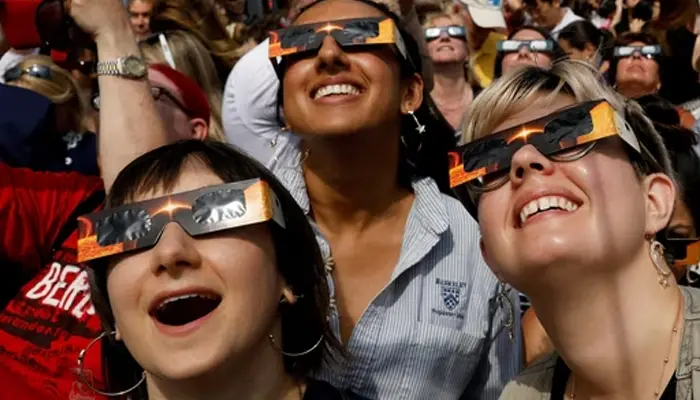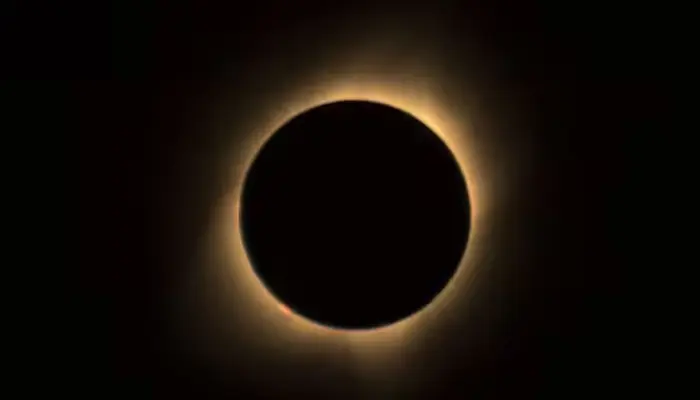A Total Solar Eclipse On April 8; Know About The Weird Things That Happen During A Solar Eclipse
- Admin
- 1 year ago
- 3 minutes read

Do you know how plants and animals react to a solar eclipse?
"An eclipse is the most unnatural natural phenomenon you'll ever experience." - Tyler Nordgren (astronomer).
The highly anticipated natural phenomenon is almost here, and countless individuals across the world are currently buzzing with excitement. Yes, on April 8, 2024, the sky above fifteen U.S. states, as well as parts of Canada and Mexico, will darken because of a total solar eclipse - marking one of the biggest (if not the biggest) celestial events in recent times.
 celestial events in recent times..webp)
For the unversed, a solar eclipse occurs when the Moon passes between Earth and the Sun, obscuring the image of the Sun for a viewer on Earth. And when the Moon's apparent diameter is larger than that of the Sun, blocking all direct sunlight, then it is a total solar eclipse.

As we gear up, let's learn about some weird things that happen during a solar eclipse.
Baily's beads
During a total solar eclipse, as the moon covers the sun, it creates a sliver of light at the edge of the eclipse - which appears beaded. This is known as "Baily's beads", named after the astronomer Francis Baily who described the effect in 1836.

As Johns Hopkins University astrophysicist Dr. Bill Blair described, "… in the phenomenon known as ‘Baily's beads’ … the sun can actually peak through lunar valleys right along the edge of the moon's limb."
The temperature drops
Due to the lack of sunlight, the temperature during a solar eclipse could drop quickly. Although it depends on location, type of eclipse, and season; the temperature drops range somewhere between 2°F and 28°F. So, make sure to keep a jacket ready!
According to a report by NASA, an eclipse in Zambia in 2001 dropped the local temperature by about 15°F.
A change in wind
Additionally, a solar eclipse could also lead to a change in wind direction. Due to the drops in temperatures, the cool air mixes with the warmer air, leading to changes in wind patterns. The air starts moving from high-pressure areas to low-pressure areas, causing a change in wind direction.

As Giles Harrison, a professor at the University of Reading, explained, "As the sun disappears behind the moon, the ground suddenly cools, just like at sunset."
A change in animal behaviors
Due to the sudden darkness and drops in temperatures, animals and birds get utterly confused and start exhibiting changes in their behaviors. The diurnal animals and birds prepare for sleep thinking it's night, while the nocturnal ones become active. Some even become disoriented to a huge extent.

An article by National Geographic explained, "The early onset of darkness disrupts animals’ circadian rhythms, sparking a possible chorus of owl hoots, cricket chirps or even coyote calls, depending on the eclipse-viewing location."
Solar prominences
Solar prominence (although rare) can also happen during a solar eclipse. These refer to the massive plasma and magnetic field structures that arise from the sun's surface. These appear as flower petals framing the moon, creating a sight to behold.
However, do not watch the solar prominence with naked eyes.
The total solar eclipse on April 8 is a one-of-a-kind event, and hence is worth all the hype!












